|

|
Second
Meeting of the Conference of the Parties of the Stockholm
Convention
|
|
|
Highlights for Thursday, 4 May 2006
In the morning, delegates met in plenary to hear progress reports from contact groups and to discuss agenda items on best available techniques (BAT) and best environmental practices (BEP), identification and quantification of dioxin and furan releases, and , listing of chemicals in Annexes A (Elimination), B (Restriction) and C (Unintentional production) of the Convention. In the afternoon, delegates convened in plenary to address reporting, information exchange and a draft decision on DDT. Contact groups on financial resources and effectiveness evaluation met during the day, while contact groups on technical assistance and synergies met later in the afternoon and evening.
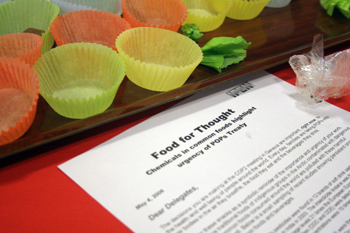
|
Plenary: Best Available Techniques and Best Environmental Practices
| |
|
|
|
|
| |
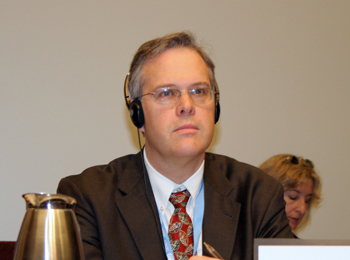 |
|
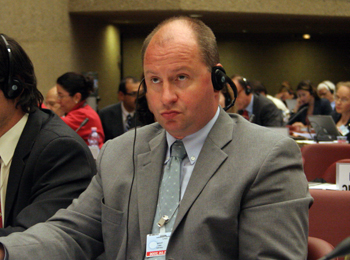 |
|
| |
David Ogden (Secretariat, Stockholm Convention) introduced the documents on BAT and BEP (UNEP/POPS/COP.2/7 and UNEP/POPS/EGBATBEP.1/5). |
|
Thomas Jakl (Austria, on behalf of the EU) emphasized that the guidelines should be living documents, and suggested that the Expert Group maintain close contact with the relevant bodies of the Basel Convention. |
|
| |
|
|
|
|
| |
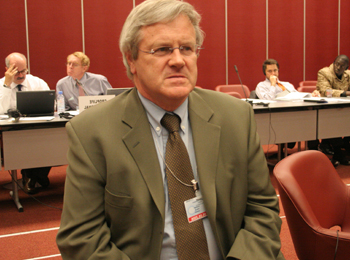 |
|
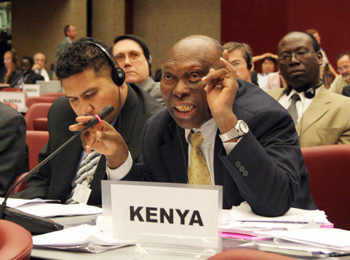 |
|
| |
Patrick Finlay (Canada) supported the development and implementation of the BET/BEP guidelines, and called for their consideration and adoption at COP-3. |
|
Francis Njaguna Kihumba (Kenya, on behalf of the African Group) suggested that the regional meeting in Africa take place after COP-8 of the Basel Convention. |
|
Plenary: Identification and Quantification of Dioxins and Furan Releases
| |
|
|
|
|
|
|
| |
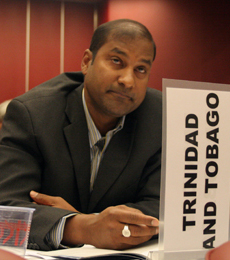 |
|
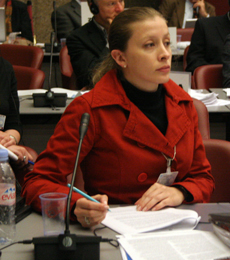 |
|
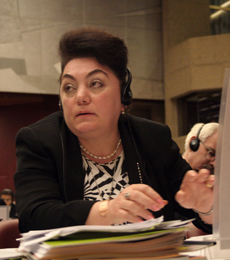 |
|
| |
Wayne Rajkumar (Trinadad and Tobago) recognized the toolkit's limitations, but considered it a work in progress. |
|
Marta Ligia Pérez (Colombia) called for standardized toolkits for PCBs and HCBs, open and transparent consultations for toolkit revisions, and pilot studies on emission factors for agricultural burning.
|
|
Anahit Aleksandryan (Armenia) called for adoption of the toolkit. |
|
Plenary: Listing Chemicals in Annexes A, B or C of the Convention
| |
|
|
|
|
| |
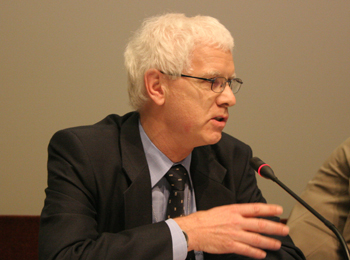 |
|
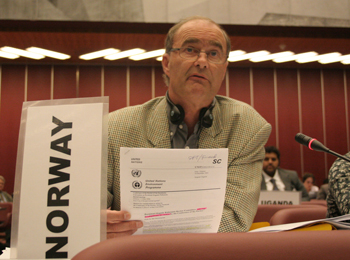 |
|
| |
Reiner Arndt (Chair of POPRC) highlighted activities of the first meeting of the POPRC, including assessing five nominated chemicals against the screening criteria of Annex D of the Convention. |
|
Atle Fretheim (Norway) expressed their support for the efforts of the POPRC. |
|
Plenary: Information Exchange
| |
|
|
|
|
|
|
| |
 |
|
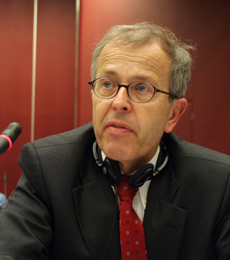 |
|
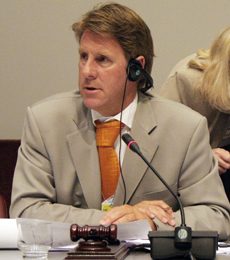 |
|
| |
Osmany Pereira (Secretariat, Stockholm Convention) introduced documents on a clearing-house mechanism (CHM) for information on POPs (UNEP/POPS/COP.2/13) and the draft strategic plan for a CHM (UNEP/POPS/COP.2/INF/8). |
|
Georg Karlaganis (Switzerland) suggested the Convention’s website be given priority. |
|
COP-2 President Kiddle requested that the Secretariat draft a decision that includes agreement on the core elements of the CHM, and approval of the pilot phase and its budgetary implications. |
|
Plenary: Reporting
| |
|
|
|
|
| |
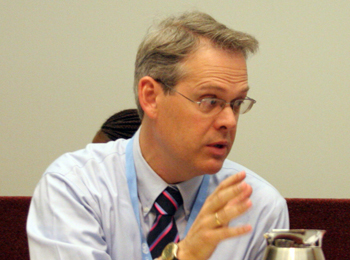 |
|
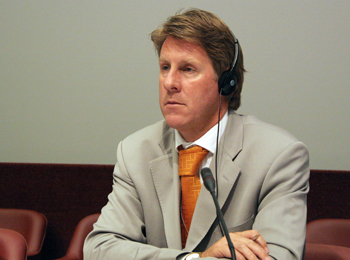 |
|
| |
David Ogden (Secretariat, Stockholm Convention), introduced documents outlining a cost estimate for developing an electronic system for reporting (UNEP/POPS/COP.2/19) and a draft format for reporting on polychlorinated biphenyls (PCBs) under the Convention (UNEP/POPS/COP.2/20). |
|
Noting that parties must report on PCBs by the end of 2006, COP-2 President Kiddle asked for further amendments to be supplied to the Secretariat by Friday morning. |
|
Plenary: Official Communications with Parties and Observers
| |
The Secretariat provided an overview of this issue (UNEP/POPS/COP.2/26), and highlighted the need to identify and register official contact points and to accredit non-governmental organizations as observers. Delegates discussed the issue. |
|
| |
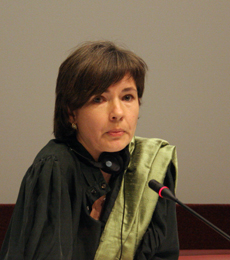 |
|
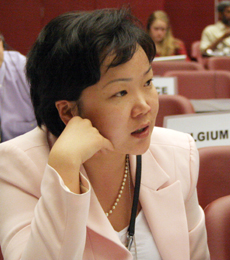 |
|
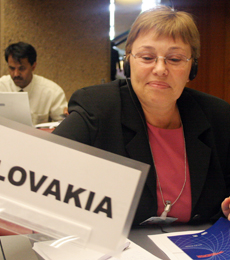 |
|
| |
Elena Sobakina (Secrateriat, Stockholm Convention). |
|
Navaan-Yunden Oyndari (Mongolia) |
|
Marta Fraticova (Slovakia) |
|
| |
|
|
|
|
|
|
| |
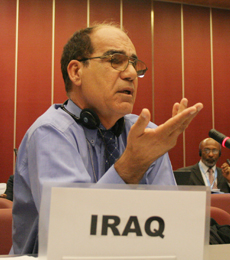 |
|
 |
|
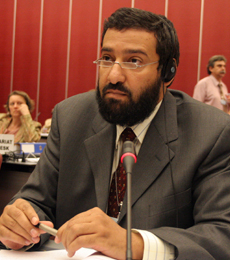 |
|
| |
Hussain Sulaiman (Iraq) |
|
Chabi Séké Morakpai (Benin) |
|
Ali Saleh Al-Omair (Kuwait) |
|
Contact Group: Effectiveness Evaluation
| |
The effectiveness evaluation contact group continued discussions on: review of future arrangements; provision of financial resources for gathering information for the first effectiveness evaluation report; long-term funding arrangements to implement the global monitoring plan; and proposed COP procedures for evaluating the Convention’s effectiveness.
|
|
| |
|
|
|
|
| |
|
|
|
|
Contact Group: Financial Resources
| |
The financial resources contact group agreed to a draft decision on the review of the financial mechanisms. Preliminary discussions then began on a draft decision on additional guidance to the financial mechanism. Discussions will continue on Friday morning. |
|
| |
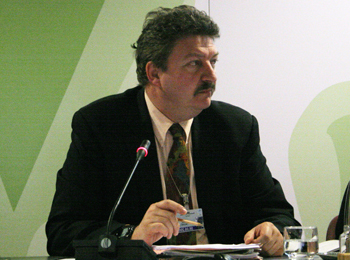 |
|
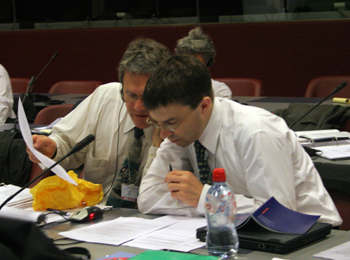 |
|
| |
|
|
|
|
Contact Group: Technical Assistance
Delegates continued discussions on the ToRs for regional and subregional centers for capacity building and technology transfer, and addressed, inter alia: working language, legal status, autonomy and institutional arrangements of the centers; funding for the centers’ activities; and the relationship between the centers and the POPs Secretariat. |
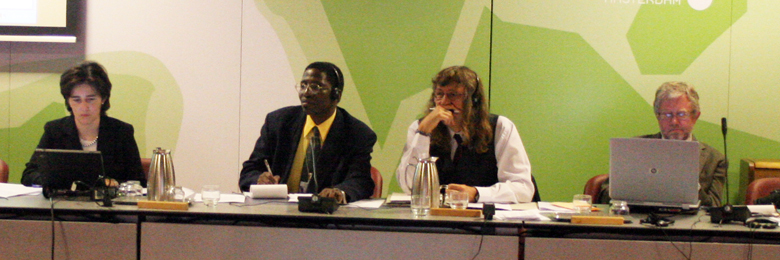 |
| |
Contact Group: Synergies
|
The synergies contact group met late into the night working on a draft decision on synergies between the Rotterdam, Basel and Stockholm Conventions. |
|
|
|
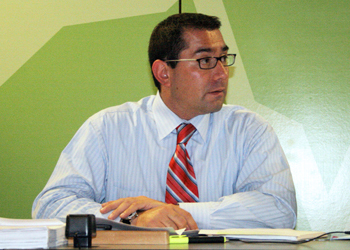 |
|
|
| |
|